The Tang Dynasty was the heyday of China's feudal society, especially during the years of Zhenguan (贞观) and Kaiyuan (开元) when the political climate was relaxed and people lived and worked in peace. The typical styles of the Tang Dynasty Hanfu are Gongfu (公服, official uniform), round-necked robe, Banbi (半臂), Pei (帔, large-sleeved formal dress), and so on.
From the Sui to the Tang (618-907), the development of ancient Chinese Hanfu clothing reached its heyday, political stability, economic development, advances in production and textile technology, frequent foreign exchanges, etc. contributed to the unprecedented prosperity of clothing, clothing styles, colors, patterns, etc. were the unprecedented new situation. The women's costumes of this period are one of the most exciting chapters of Hans costume, with their rich beauty and splendor, and their exotic decorations are breathtaking.
Chang'an in the Tang Dynasty was the political, economic, and cultural center of the time and, at the same time, the center of East-West cultural exchange. There were more than three hundred countries that had friendly relations with the government of the Tang Dynasty. The splendid Chinese culture, spreads to the world. To this day, some countries in East Asia still use the Tang Dynasty dress as a formal dress, which has a long-lasting influence. Foreign friendly messengers gathered in Chang'an and also brought their culture to the Tang Dynasty.
The Tang Dynasty's art of painting, sculpture, music, and dance all attracted exotic techniques and styles. The incorporation of exotic dresses and clothes made the Tang Dynasty more colorful. Note that the modern general sense of "Tang suit" is not Tang Dynasty Hanfu, but the costume formed after the Qing Dynasty.
Reform
The Tang Dynasty Hanfu (i.e., Chinese Hans costumes), due to the open-door policy of the Tang Dynasty, was eclectic with Western and Tufan costumes. This is the third great change in the history of ancient Chinese dress. Unlike the previous two costume changes, this time the costume exchange is changing from a north-south to an east-west flow.
There are a number of factors that contribute to the splendor of the Tang Dynasty Hanfu costumes, starting with the foundation laid in the Sui Dynasty. The Sui dynasty's reign was short, but the silk weaving industry flourished. It is written that Emperor Yang of Sui not only made his concubines to wear magnificent clothes, even the rope of the big ships when they traveled down the canal was made of silk, and made the trees on both sides to decorate their willows with green silk and their flowers with colored silk. It's amazing to see how much silk is produced.
By the Tang Dynasty, silk fabrics were produced all over the country, and their production and quality exceeded those of the previous generation, thus providing a solid material basis for the novelty and beauty of Tang Dynasty clothing. This, coupled with extensive interaction with people of all nationalities and a broad-based approach to each country's culture and its integration with national costumes, has led to the introduction of countless new and fabulous Guanfu (冠服, hats & dress).
Tang Dynasty Hanfu costumes, especially women's costumes, were not only revered at that time but even today, people feel excited to see Tang Dynasty costumes. There's no pretentiousness here, no pretentiousness. The costumes displayed in front of people are energetic, exciting, and intoxicating. The color is not too dense to take, a variety of bright colors to rival, not willing to loose loneliness, plus gold and silver mixed in, the more dazzling the eye. Its decorative patterns, all birds and animals in pairs, flower clusters, auspicious light in all directions, lively and interesting, can really be described as a great Tang scene.
The Tang Dynasty's influence in the present-day dress world, and on the later dress industry, is its unparalleled cultural, artistic and spiritual style. It presents the majestic atmosphere of the Tang Dynasty when it was at its cultural peak. The culture of the Tang Dynasty was a valuable asset of the Chinese nation, with a strong vibration and radiant force, and the centripetal and cohesive force generated by the dresses, which made us endlessly useful.
Communication
From the beginning of the Tang Dynasty to the heyday of the Tang Dynasty, the northern nomadic peoples (Huns, Qidan) had a great deal to do with the Tang Dynasty, and the continuous flow of camel caravans along the Silk Road had a great influence on Tang dress. The culture that came with the Hu (an ancient Han derogatory term for northern peoples), especially the Hu costume - a national costume that included many Indian, Persian and other ethnic components - was refreshing to Tang women. As a result, Hu clothing fever swept through the cities of the Central Plains, especially Chang'an and Luoyang, and its ornaments were also the most exotic.
The Tang Dynasty was a time of high political and economic development, cultural and artistic prosperity in China, and time of feudal culture in all its glory. The Tang unified the chaotic and divided state of Wei, Jin, and North-South dynasties and Sui dynasties, and established a unified and powerful state, with developed foreign trade transactions and greatly developed productivity, and a longer period of national prosperity and peace.
Especially when the Tang Dynasty became the center of economic and cultural exchange among Asian peoples, it was the most glorious page in the history of Chinese culture. This period absorbed Indian and Iranian culture and was integrated into our culture, fully reflected in murals, stone carvings, books, paintings, ceramic figurines, and costumes.
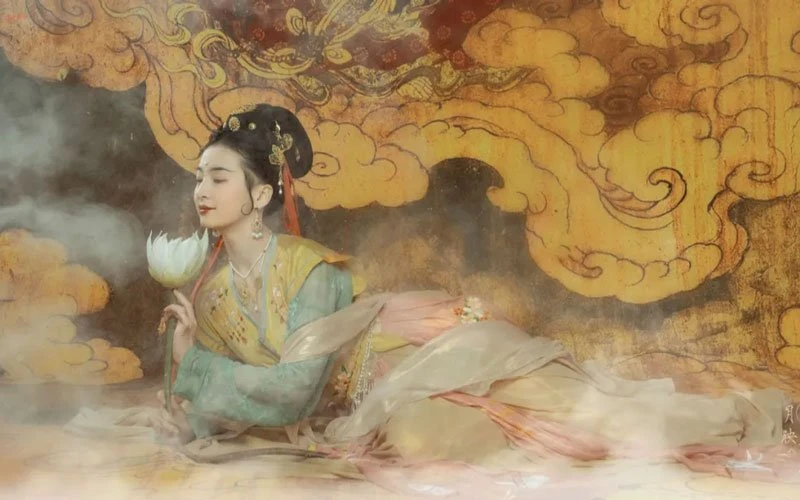
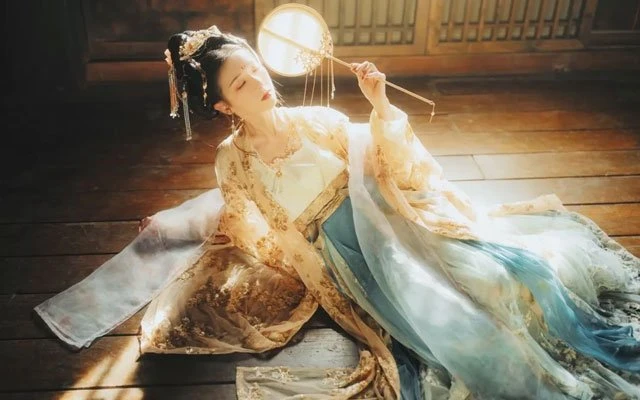
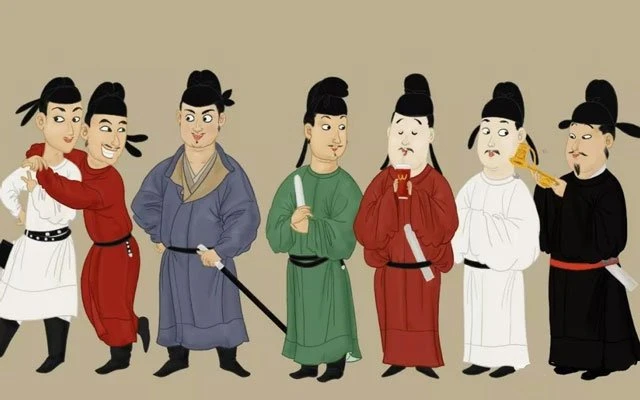
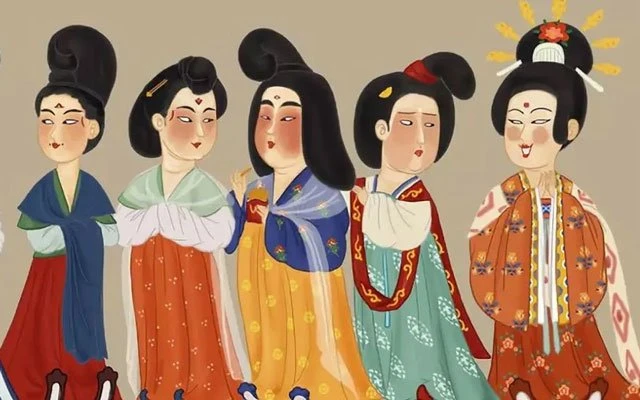

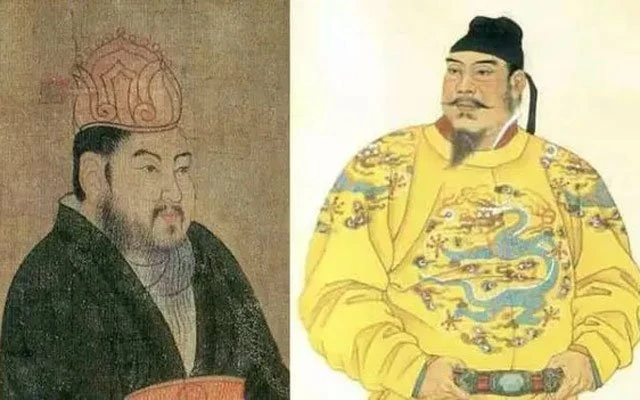
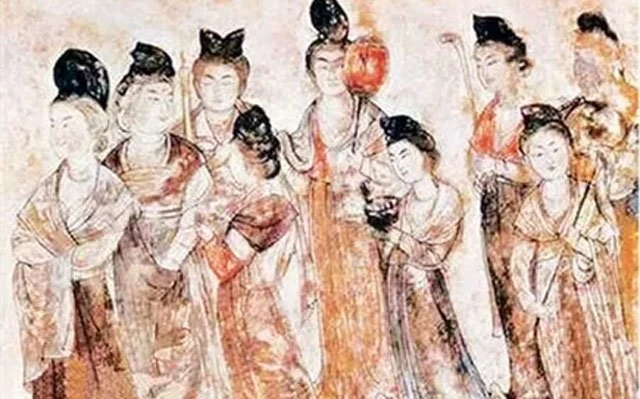
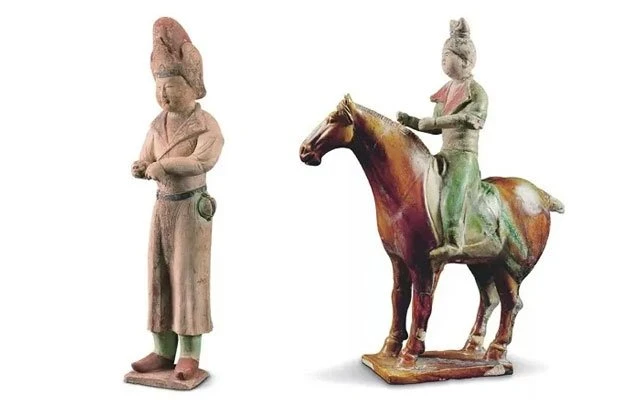
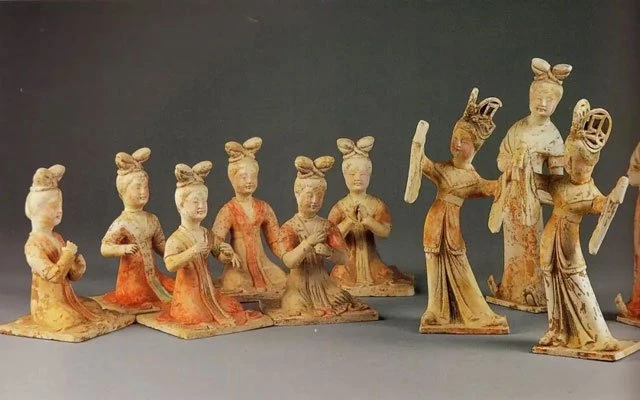



Interesting that you put, "... the costume exchange is changing from a north-south to an east-west flow." It is VERY interesting.
😍😍😍